History
LAU’s remarkable history originated in the desire to extend education to women at a time when few, if any, such possibilities existed.
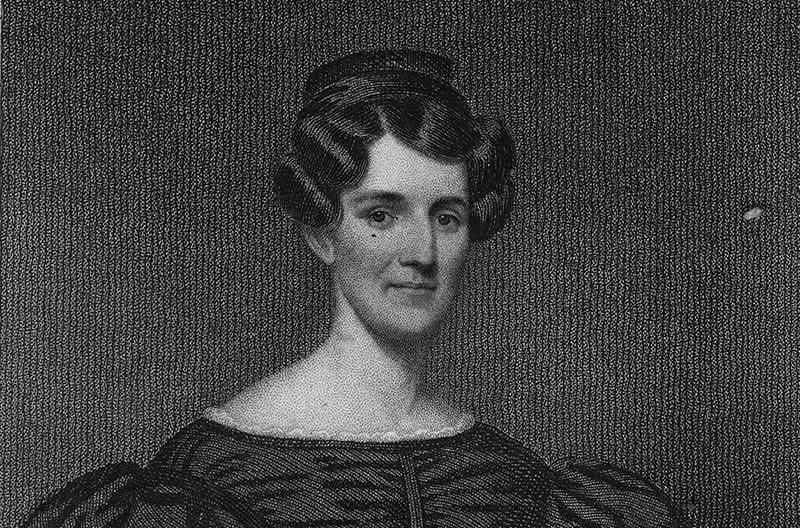
An engraving of Sarah L. Smith. Appalled at the upbringing of local girls in 1835, she started giving regular classes to those who would take them. Smith fell ill and died the same year, but her actions left an incalculable legacy.
Presbyterian missionaries Eli and Sarah L. Smith came to Lebanon in 1835. Noticing the prevalent illiteracy among girls in Beirut, Sarah decided to offer classes to the local population. With a handful of students, she started what soon became known as the American School of Girls.
After a sectarian conflict in 1860, ASG was renamed Beirut Female Seminary. It went through several changes—including a few interruptions—before reverting to its original name in 1868, and becoming a popular school for women which included secondary education. Over the decades it became known as the best female boarding school in the region as it drew more and more students from various locations.
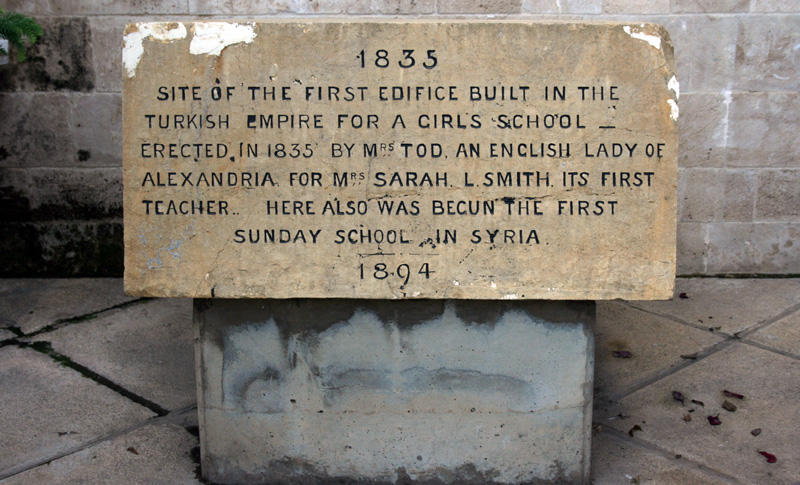
An engraved stone found today at the National Evangelical Church in Beirut is testament to that feat: “Site of the first edifice built in the Turkish empire for a girls school.” It refers to the American School for Girls (ASG), established in Beirut in 1835 by American Presbyterian missionaries. ASG inaugurated an important shift in education for women in Syria and the surrounding region.
Foundation as a Women’s College
In the early 20th century post-secondary women’s education began to take hold. In 1921 the American University of Beirut (AUB) began accepting women into its schools of medicine, dentistry and pharmacy. In 1924, ASG started a two-year junior college curriculum that was mandatory at the time for young women wishing to pursue bachelor’s degrees at AUB.
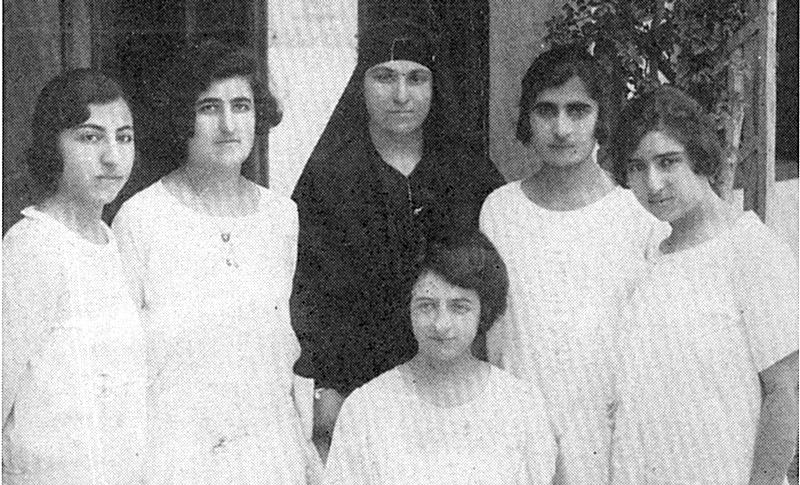
Freshman students in 1925.
In 1927, this program became known as the American Junior College for Women (AJCW) and was transferred to Ras Beirut. Six years later it moved to what is now LAU’s Beirut campus.
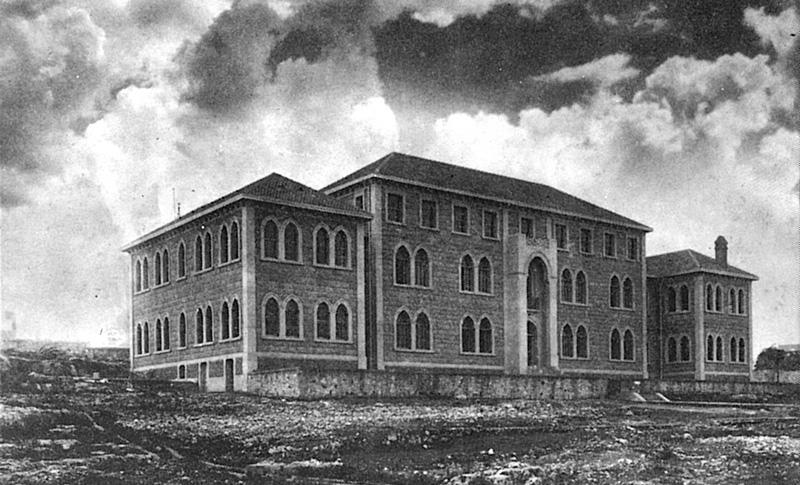
Completed in 1933, Sage Hall was the first building on site.
Charter and Academic Growth
In 1948–49 the AJCW program was expanded under the name Beirut College for Women (BCW). In 1950, it was granted a provisional charter by the Board of Regents of the University of the State of New York and it was authorized to bestow four-year Bachelor of Arts degrees and two-year associate degrees. In 1955 the Board of Regents granted BCW an absolute charter with all its rights and privileges, including the authority to also hand out Bachelor of Science degrees.
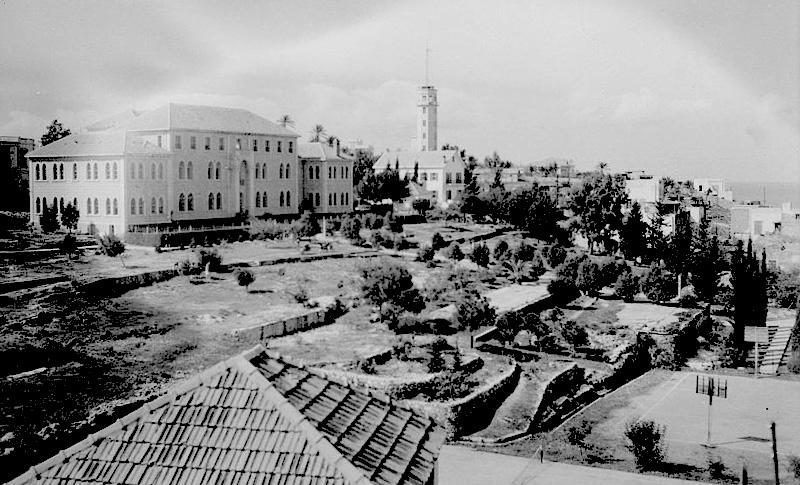
The campus in the 1940s had an open view to the sea.
As a recognized liberal arts college, it served the educational, social and economic needs of the Middle East, attracting women from across the region.
In 1970 another milestone was reached when the Lebanese Government officially recognized BCW’s BA and BS degrees as equivalent to the national Licence.
The College Turns Coed and Expands Outside Beirut
Having accepted men into some programs, the college changed its name to Beirut University College (BUC) in 1973. By October 1975 men were admitted into all programs. In 1978, BUC established an off-campus program—the Louaizeh Center of Higher Education—in the north (Zouk Mosbeh) and a year later another one—the Makassed Center for Higher Education—became operational in the southern city of Sidon, to provide educational opportunities to young people from various regions of the country as the Lebanese civil war raged in Beirut.
Despite numerous wartime difficulties, BUC constantly evolved. In 1985, the Board of Regents amended the charter to allow for the establishment of two additional branch campuses in Zouk Mosbeh and Sidon. In 1987, BUC opened its northern branch in rented buildings in Amsheet, on the outskirts of the historical port of Byblos. In October 1991, classes started in the newly built campus at Blat overlooking Byblos. It was officially inaugurated on July 16, 1992.
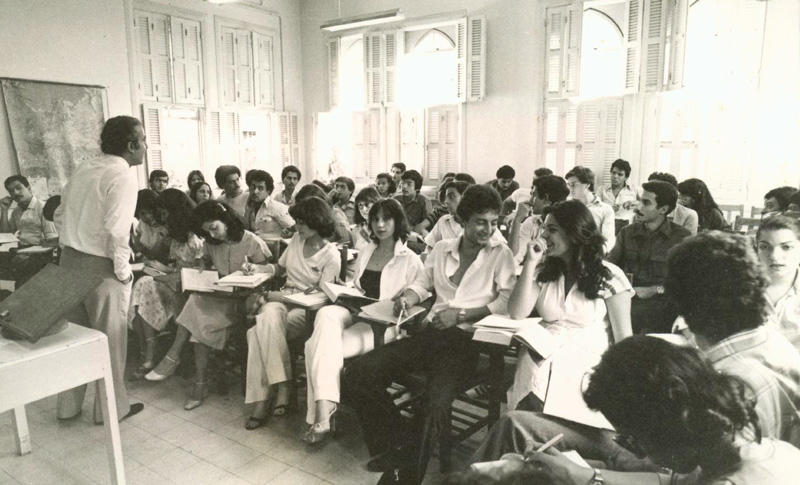
In the early 1970s the college expanded its mission and service to all youth regardless of gender.
Final Name Change, Constant Growth
According to a BUC Board decision, the institution became a university in October 1992. In 1994, the Board of Regents in New York approved BUC’s request to change into the Lebanese American University (LAU), moved the Louaizeh branch in Zouk Mosbeh to the Byblos campus, renamed the Makassed branch in Sidon to Sidon campus, and provided the university with the authority to also confer the degrees of Bachelor of Architecture, Master of Science, and Master of Arts. A charter amendment in 1999 allowed LAU to grant the Bachelor of Engineering, Bachelor of Science in Pharmacy, and Doctor of Pharmacy degrees.
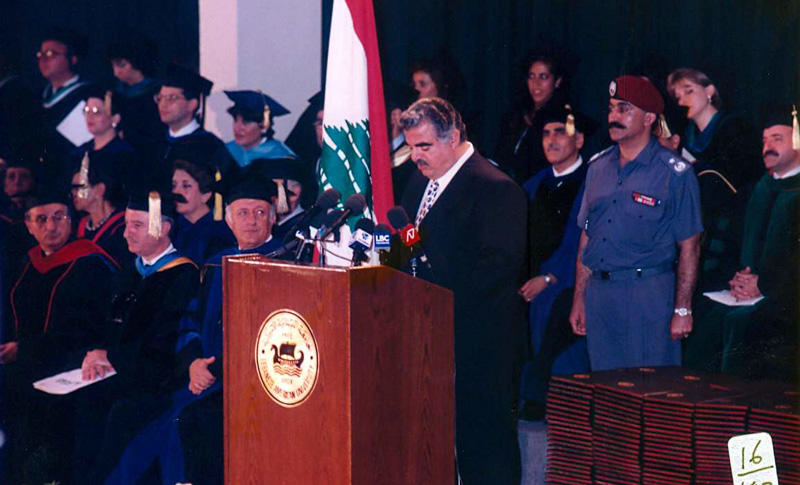
The late Prime Minister Rafic Hariri announces governmental approval of new professional programs and of the university’s name change, during the commencement ceremony of 1996.
In September 2005 the Board of Trustees approved a comprehensive strategic plan focusing on academic excellence, enrollment management, information technology, public relations and marketing, fund raising, and finance and administration.
In July 2008 LAU broke ground for the Gilbert and Rose-Marie Chagoury School of Medicine. In June 2009, LAU’s expansion into the field of medical education was buttressed by the acquisition of a majority shareholder position in the LAU Medical Center–Rizk Hospital. With the launch of the Alice Ramez Chagoury School of Nursing in 2010, and with a School of Pharmacy known for its high standards, LAU set the stage for a world-class health education hub.
In May 2010, LAU was granted full accreditation by the New England Commission of Higher Education, Inc. (formerly the Commission on Institutions of Higher Education of the New England Association of Schools and Colleges, Inc.).
Currently in its fourth strategic plan since 2005, LAU is on a path toward enhanced intellectual capital, pedagogical innovation, establishing more bridges with industry and exploring opportunities to bring the LAU mission outside Lebanon.